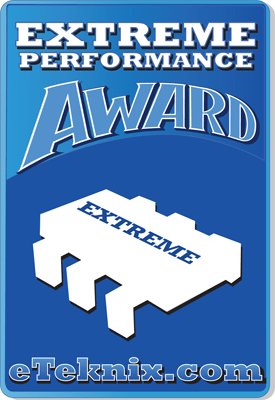Intel Core i7-6950X Broadwell-E Processor Review
John Williamson / 8 years ago
Final Thoughts
Pricing
At the time of writing, Intel’s latest flagship desktop processor retails for an eye-watering £1419.99 from eBuyer.com. Please note, this is the cheapest price I’ve seen for some time and it’s been quite common for stores to charge near the £1500 mark. Of course, this is an absurd amount of money, but you have to remember that it’s not a mass market product and designed for professionals who rely on complex multi-threaded workloads to please clients. Theoretically, it could be argued that there is some value to the i7-6950X providing you’re working with an application which can take advantage of the full 10-cores.
However, the Intel Xeon E5-2640 v4 is the much better option in my opinion unless you have to keep using the X99 platform. For example, this Xeon chip can be procured for £916.09. utilises the same 10-core/20-thread configuration and has 25MB of level 3 SmartCache. The i7-6950X does have some advantages since the Xeon processor doesn’t support multiplier overclocking, has a base frequency of 2.4GHz and official memory bandwidth support ends at 2133MHz. It’s possible to overclock the Xeon model using the BCLK but this is going to be quite limited compared to the i7-6950X. One major benefit the Xeon has is you can buy two and substantially increase your workstation’s compute performance. Whether you feel the i7-6950X’s extra features are worthwhile is down to your own personal requirements but I struggle to understand why this new 10-core has received such a price hike over the previous flagship.
Overview
As Intel’s first 10-core desktop processor, the i7-6950X is a landmark product and continues the company’s trend of increasing the core count on a fairly regular basis. This latest feat of engineering offers astounding multi-threaded performance and exhibits a significant lead over the previous flagship in professional applications. Of course, the number of programs able to utilise the extra cores is small and the i7-5960X should be ample for most usage scenarios. Saying that, in extreme circumstances where the longer rendering times cost money, the higher retail price might be justified. Personally, I’d still go down the Xeon route and make a few compromises when it comes to raw frequency.
The i7-6950X provides superb quad-channel memory bandwidth and the write speeds are well ahead of the i7-5960X. When paired with a set of DIMMs running at a modest 2400MHz speed, the write rate went from 47,972 on the i7-5960X to 60,744 on Intel’s 10-core processor. This is a substantial improvement and the added write bandwidth can be useful in specialised workloads. Typically, single-threaded performance is quite disappointing on processors sporting a high core count and it’s challenging to achieve the sort of frequencies possible on a chip like the i7-6700K. Intel has tried to alleviate these concerns with the Turbo Boost 3.0 Technology which outlines the best performing core and automatically increases the clock speed from 3.0GHz to 4.0GHz. Despite this, it didn’t seem to make a huge difference compared to the i7-5960X and i7-5820K and remained behind the i7-6700K in single-threaded tasks. I do think it’s a fantastic inclusion which pushes the single-core performance of processors mainly designed for multi-threaded performance slightly higher.
In terms of overclocking, the headroom is extremely limited and going beyond 4.3GHz requires impeccable cooling hardware. Even when paired with a 360mm closed loop liquid cooling solution, the temperatures rise at a frantic pace and it’s unlikely that you’ll be able to keep the overclock stable. From my own experience, 1.3V or above is required to reach 4.3GHz and this puts a huge strain on the processor’s thermal output. As a result, the temperatures hit an average of 91C and almost failed the benchmark.
Clearly, your mileage may vary but it’s essential to invest in the right cooling apparatus if you want to overclock the CPU and maximise its potential. Selecting above 1.3V results in a huge power consumption spike but it’s still lower than the i7-5960X. Once overclocked, the processor excels and posts very impressive results. Therefore, it’s worth investing the time to overclock the CPU to at least 4.2GHz if possible. Intel has incorporated a number of other features to aid overclocking such as the AVX ratio offset and VccU voltage control. This makes the i7-6950X a great option for professional benchmarkers and users wanting to explore the chip’s performance with LN2.
Pros
- AVX ratio offset balances performance demands
- Compatible with existing 2011-v3 motherboards after a BIOS update
- Extraordinary multi-threaded performance
- Good stock temperatures
- Memory writes much faster than i7-5960X
- Rudimentary overclocking procedure
- Thunderbolt 3.0 support
- Turbo Boost 3.0 Technology offers great flexibility
- VccU voltage control is designed for LN2 overclocking
Cons
- Extreme performance comes at an extreme price
- Intel Xeon E5-2640 v4 is significantly cheaper
Neutral
- Major thermal increase beyond 1.3V but expected given the 10-core configuration
“The Intel Core i7-6950X is capable of unbelievable multi-threaded performance and offers a good boost over the previous desktop flagship providing applications support the extra 2-cores. Saying that, the Intel Xeon E5-2640 v4 is a more enticing proposition unless you have to retain an existing X99 configuration.”

Intel Core i7-6950X Broadwell-E Processor Review
Thank you ASUS for providing us with this review sample.



















